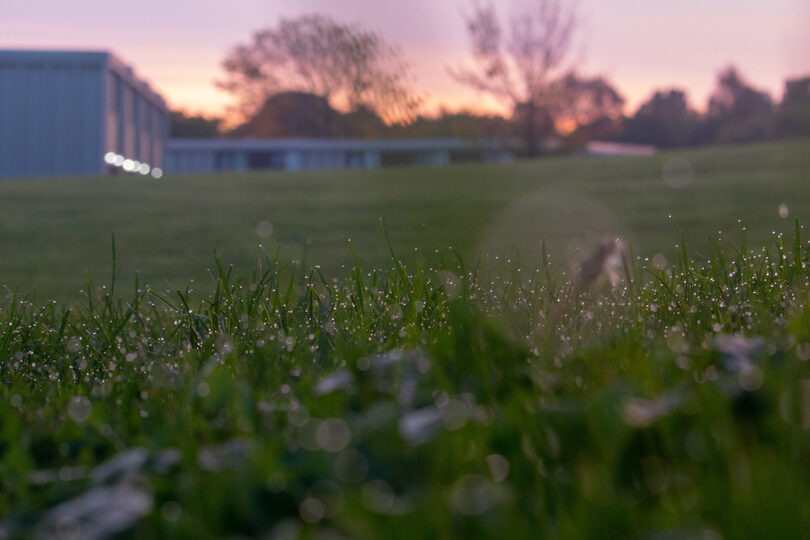Using scare tactics when discussing climate change isn’t helping the problem

Meghan Hendricks | Photo Editor
Communicating about climate change is difficult and it often doesn’t resonate with people, so we need to restructure how we speak on the issue.
To support student journalism and the content you love, become a member of The Daily Orange today.
When a 70 degree day hit Syracuse two months ago, hundreds of students took to the quad in search of the perfect plot of grass to set up their blankets and soak up that rare February sunshine.
However, behind the excitement and smiles lay the ignored fear of what it means when a city with one of the highest snowfall rates in America experiences spring-like temperatures in the dead of winter. Yet, the few who voiced this concern found themselves met with eyerolls.
It’s true, most climate news is a downer. To some extent, you can’t blame that attitude.
And in our current times, no one wants to hear how awful everything is all the time.
Which is why at the very least, environmentalists or those who are simply worried, have to see their role in deepening this depressing dialogue.
“We had a rule: if you talk about climate change you will be fired,” said Tom Steyer, former presidential candidate and climate activist. Steyer visited Syracuse University on Tuesday and spoke about how he coached his employees to communicate climate issues. He discussed how climate change is inherently dispiriting and people don’t respond well to it.
We’ve seen this “climate doomism” on many occasions, most recently regarding President Biden’s approval of the Willow Project, a controversial Alaskan oil drilling project. Social media, such as TikTok, continues to show upsetting videos of polar bears floating away on icebergs, set to depressing music and designed to trigger a fearful and somber response.
According to ABC7 News, 70% of the U.S. suffer from climate anxiety. While it is important to hear about these issues in order to fight against them, the means of conveying this information has proven to cause people to mentally check-out from the discussion.
Climate change is also difficult to communicate due to how distant Americans are from the issue. It’s hard to imagine glacial melting in Iceland when it’s thousands of miles away. The fact that developing countries are disproportionately affected by climate change furthers this detachment. A study from the Yale Program on Climate Communication demonstrates that although 72% of Americans acknowledge that climate change is occurring, only 47% believe it will affect them.

Stephanie Zaso | Digital Design Director
But climate change is affecting Americans. California is preparing for an increase in wildfires and Maine has seen a disproportionate increase in sea level, rising one inch every six years. Alaska is another example, we sometimes forget glaciers are melting there too. We are not immune to the issue. While climate change is based on years of patterns and one 70 degree day isn’t a determining statistic, extreme weather in the US has been linked to climate change.
To most Americans, these facts are just as obscure as glacial melting. But some SU students have witnessed this first-hand and are trying to be a part of the solution.
Chile has the worst water scarcity in Latin America and houses one of Syracuse Abroad’s main centers. When senior Olivia Budelmann studied in Santiago in 2022, she experienced random hours of the week where the government would tell them they wouldn’t have water.
Budelmann is referring to the water rationing plan that the Chilean government implemented after experiencing a 13 year drought. In addition, citizens of Santiago, such as Budelmann’s host family, did their part by taking short showers and using minimal water when washing the dishes.
These experiences make us more aware global citizens and provide us with sustainable solutions to take back home. Budelmann agrees that she is now much more conscious of her water usage, even at SU.
Not everyone has had these global experiences, but it is important for those who have to become storytellers in order to help break down the gap and make it more tangible. Telling a human story is one of the best ways to communicate climate change.
To some degree, this only furthers another problem with climate outreach: elitism. As Steyer stated in his panel, “the climate movement has always been an elitist movement.” With convoluted statistics and graphs and talk of greenhouse gas emissions and net zero coalition, it’s no wonder climate science is incomprehensible for so many.
“Why do people not care? Because you’re not speaking [standard] English,” Steyer said.
There is hope, however, and it can begin right here on campus. SU’s Dynamic Sustainability Lab was designed to help achieve climate goals and inspire others to take action by making the movement more accessible. On April 7, the lab hosted a screening of “Dr. Seuss’: The Lorax” as a part of an Earth Month celebration.
Syracuse also has many academic options to learn about environmental science. Major options at SU such as ‘Environment, Sustainability and Policy’ prepares students to work toward sustainable practices and policies across a range of careers. For those who simply need to fulfill natural science credits, should choose from the range of environmental science classes. Even right next door to SU is SUNY ESF’s 27 undergraduate majors, ranging from biochemistry to environmental education.
Climate communicators advise activists to talk about what matters to people: how to help directly with what is occuring in their community. In Syracuse, Onondaga Lake, the most polluted lake in America, is what our focus should be on. Municipal, industrial and sediment loading pollution have impacted water and fish supplies, affecting the ecosystem and the Syracuse community directly. Vast efforts have been made to restore the lake, but so much is left to be done.
Which is where the Syracuse community comes in.
By taking action, educating ourselves and improving climate outreach and communications we will begin to reach our goals. Climate change is not an issue that can be resolved by a select few. It requires a global effort that can only be met by involving everyone in the discussion. And that can only be done if these goals are accessible, digestible and promising for people, or else what is the point.
Olivia Fried is a Freshman studying International Relations. She is a bi-weekly columnist and can be reached at oefried@syr.edu





